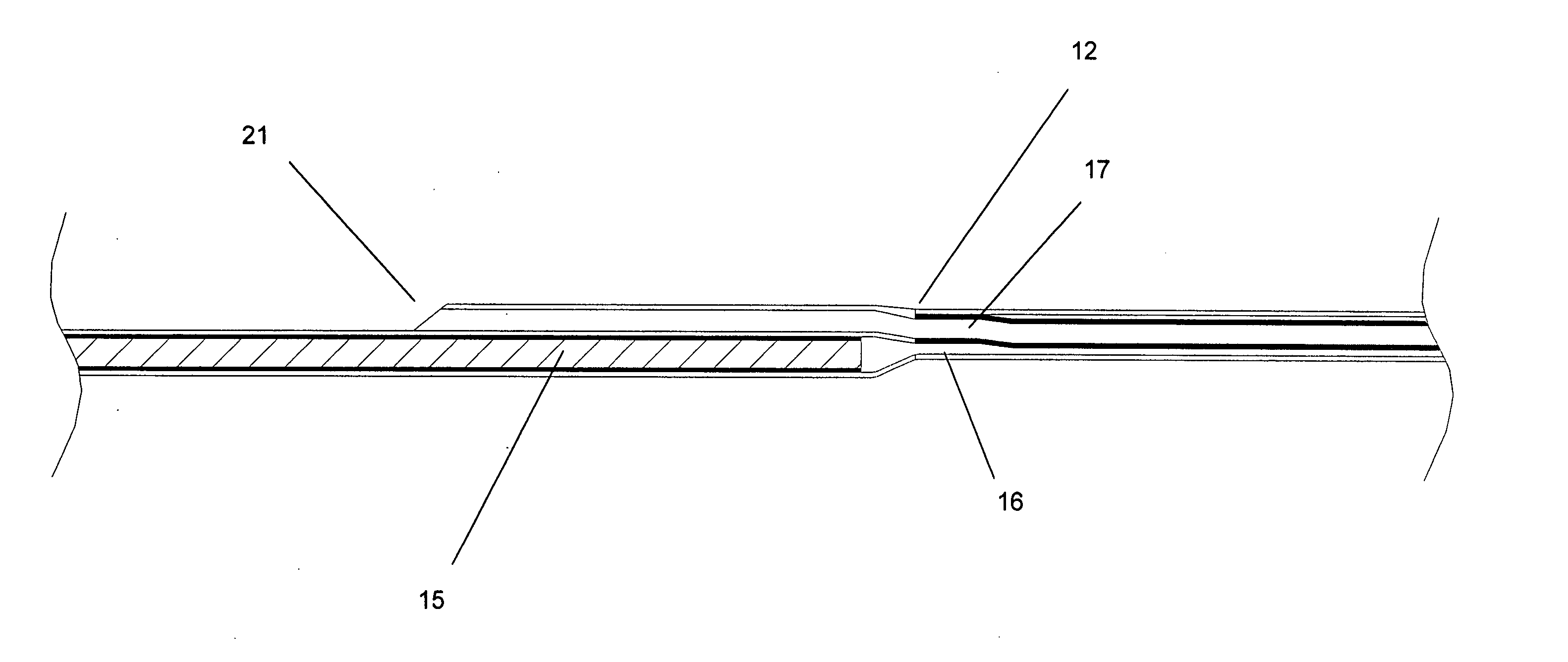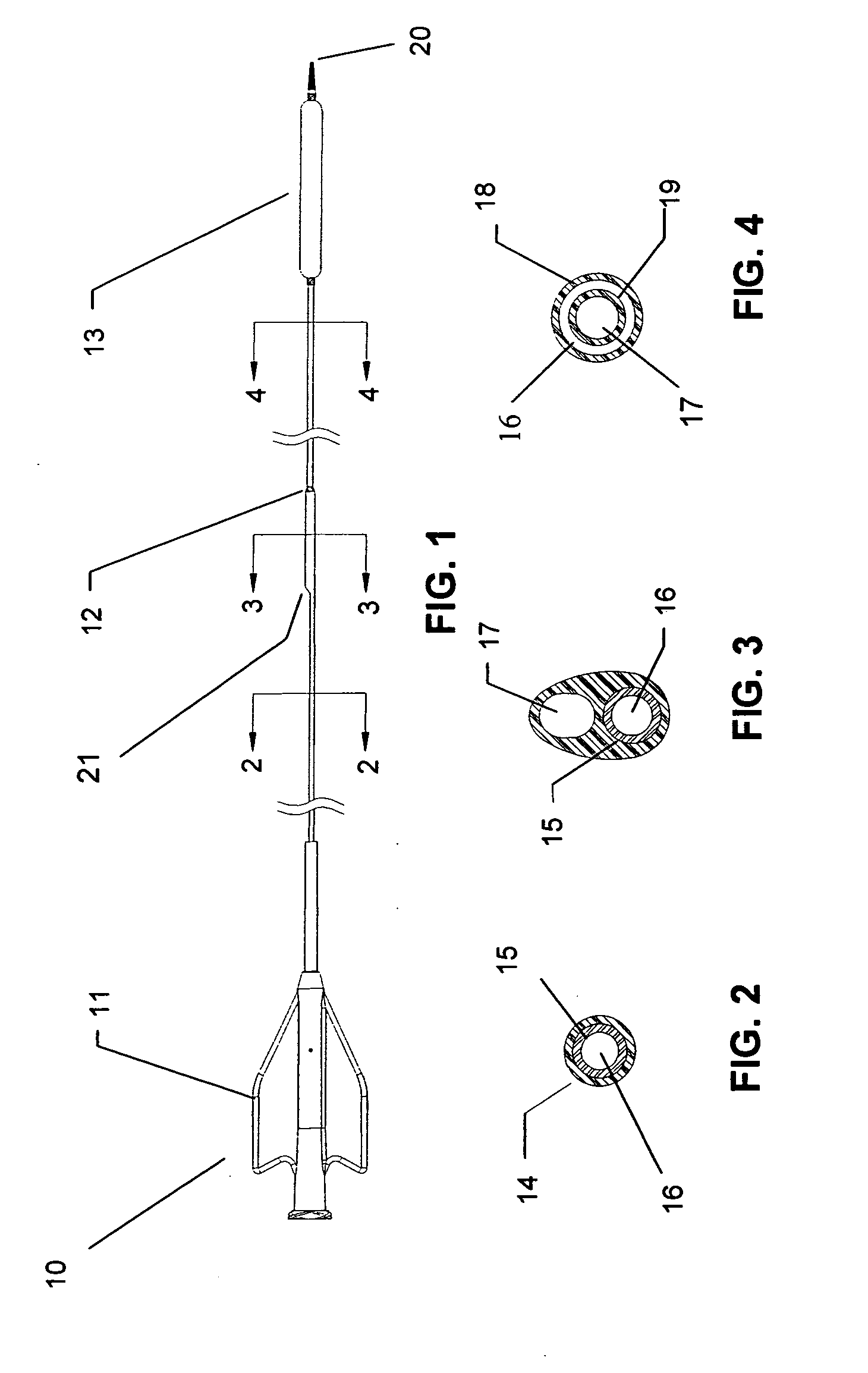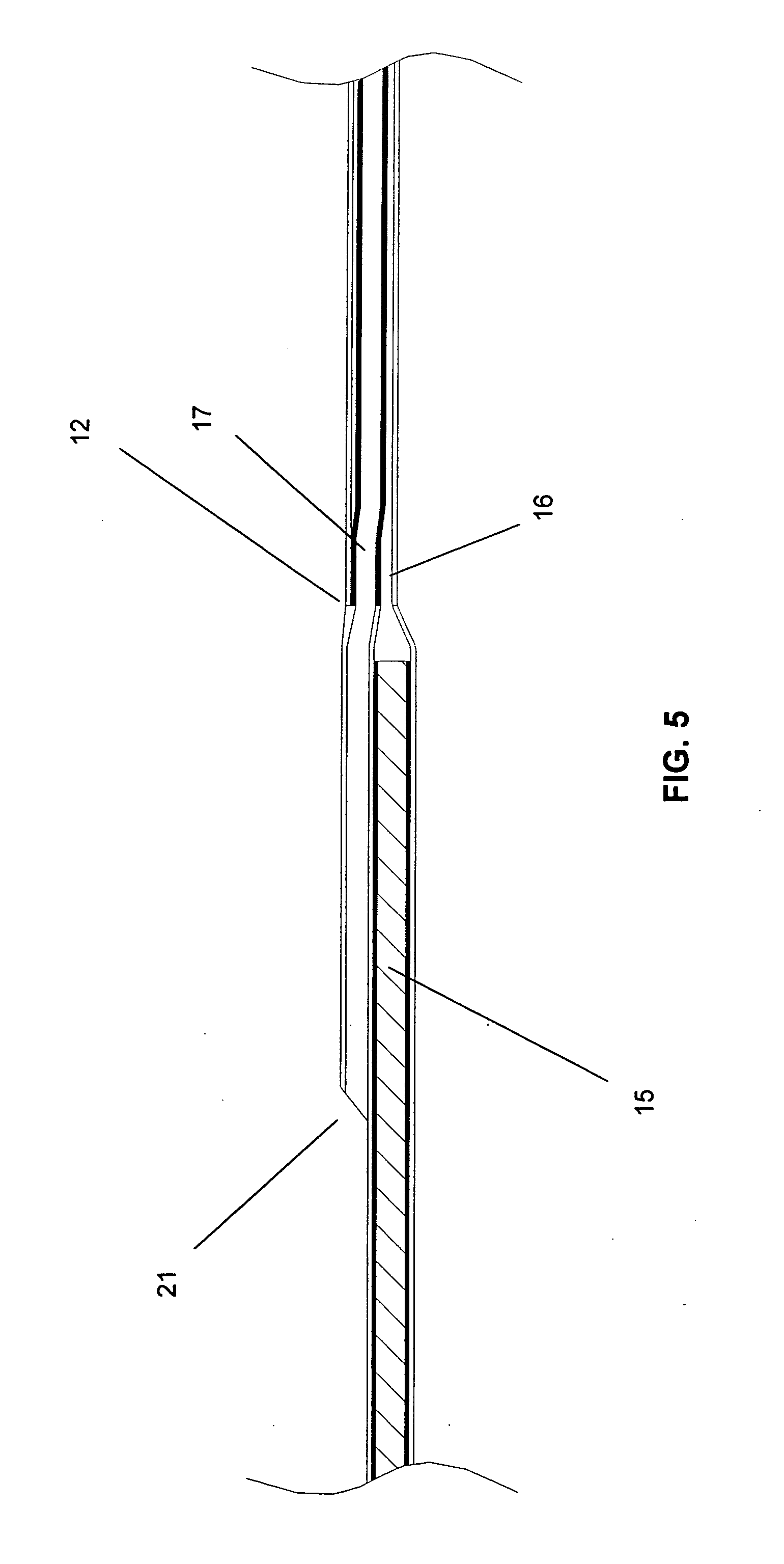Catheter assembly
a technology of catheter and assembly, which is applied in the field of catheter, can solve the problems of inability to effectively operate by one person, inability to perform wire exchange, and inability to direct longitudinal force along the path of guidewire, etc., and achieve the effect of improving columnar strength
- Summary
- Abstract
- Description
- Claims
- Application Information
AI Technical Summary
Benefits of technology
Problems solved by technology
Method used
Image
Examples
Embodiment Construction
[0027] The invention may best be understood with reference to the Figures wherein certain preferred embodiments are set forth in detail.
[0028] Turning to FIG. 1 there is shown a rapid-exchange type balloon catheter 10. Typically located on the proximal end of such a catheter is hub assembly 11. As can be seen catheter 10 includes a proximal section and a distal section in this case joined in abutting relationship at joint 12. The proximal section and distal section can be joined in any suitable manner, such as adhesively joined, fused, welded, etc. In an aspect of the invention the proximal and distal sections are butt welded, glued, etc. together so as to form a smooth joint without one section overlapping the other, and without a transition piece, such as a hollow tube, fitted over each piece. As shown in FIG. 2, proximal section includes an outer wall material 14 (such as a plastic material, or other suitable material) and reinforcing tubular member 15 supporting the outer wall ...
PUM
| Property | Measurement | Unit |
|---|---|---|
| length | aaaaa | aaaaa |
| length | aaaaa | aaaaa |
| length | aaaaa | aaaaa |
Abstract
Description
Claims
Application Information
 Login to View More
Login to View More - R&D
- Intellectual Property
- Life Sciences
- Materials
- Tech Scout
- Unparalleled Data Quality
- Higher Quality Content
- 60% Fewer Hallucinations
Browse by: Latest US Patents, China's latest patents, Technical Efficacy Thesaurus, Application Domain, Technology Topic, Popular Technical Reports.
© 2025 PatSnap. All rights reserved.Legal|Privacy policy|Modern Slavery Act Transparency Statement|Sitemap|About US| Contact US: help@patsnap.com



